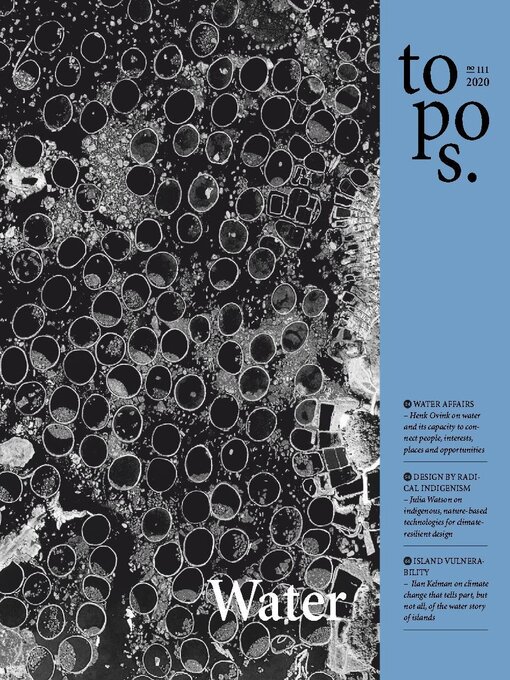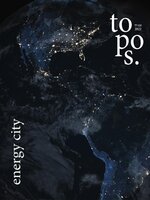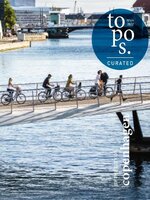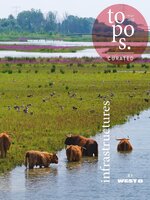Topos is a must-have for successful landscape architects, planners, urban designers and architects all over the world.The monothematic issues provide a global overview of innovative projects, new developments and trends in the profession. Be part of the worldwide community of Topos readers!
Editor's Note
Sea Urchins under the Desert Sky
OPINION • “IN LIGHT OF THE CORONAVIRUS, THE COUNTRYSIDE’S PREVIOUS BACKWARDNESS APPEARS TO BE QUITE POSITIVE IN A NEW WAY.”
Talent vs. Mastermind
Rome
Dying Waters • Largely unnoticed by the global public, an environmental disaster is taking place in northwestern Iran: Lake Urmia, once the world’s largest permanent hypersaline lake, is drying up. Iran’s largest inland water body was declared a wetland of international importance by the Ramsar Convention in 1971 and a UNESCO Biosphere Reserve in 1976. For his series “Fading Flamingos”, the German photographer Maximilian Mann captured impressive, almost poetic images of the disappearance and transformation of a landscape.
“Water is the Driver of Change.” • We meet Henk Ovink, the first Special Envoy on International Water Affairs for the Kingdom of the Netherlands, at his home office. Ovink is responsible for maintaining good relations with foreign governments, knowledge institutions and civil society organizations around the world and initiates cooperations with the World Bank, the United Nations, the OECD and the EU. He previously served as the Senior Advisor to the Hurricane Sandy Rebuilding Task Force and was Principal of the ‘Rebuild by Design’ initiative. topos spoke with him about the potential of water to both connect and disrupt and putting water back into the hearts and minds of people, for their own wellbeing.
Little Island • An intense love/fear relationship with water has shaped lives in and around New York City from the very beginning. The new Little Island Park at Manhattan’s West Side is the latest addition to the long-term transformation of the waterfront from rough industrial harbor to upscale neighborhood park. 280 concrete piles support a 2,4 acre artificial island with a square shape tilted by 45 degrees off the shoreline. The piles open up to become concrete cones with undulating elevations that hold soil for a park and an amphitheater, accessible by two bridges from Hudson River Park. This ‘park on a pedestal’ is a significant design contribution to the landscape architecture discourse on park design in the age of resilience and the role of private donors in the public realm.
Awakening a Lifeline • Huangpu River stretches 113 kilometres across the urban realm of Shanghai and separates the city into two parts. Urban life is and has always been connected with the river and its banks. However, the riverfront has been generally used for trade, commerce and industry, and was thus inaccessible to many. So, what happened to the banks after the redevelopment of the historical promenade The Bund, and after the World Expo 2010 – two correlated projects that aimed at opening up Shanghai's waterfront to the public? In one of the fastest-growing cities in the world the only answer is: a great deal.
Water as a Leverage to redesign • Due to climate change urban regions all over the world are facing serious social, ecological and economic challenges. The way in which most of our cities are designed, however, does not make them resistant to weather extremes. Thus, the Waterplan of Antwerp gives an inspiring vision of how the city needs to approach future projects to get ready for a changing climate. This also produces an attractive living environment that is made for all inhabitants of Antwerp while offering flexibility for adaptation to a changing future.
Retrofitting urban Landscapes • Chicago has a paradoxical relationship with water. The city’s landscape history has been...

 N. 130
N. 130
 N. 129
N. 129
 N. 128
N. 128
 N. 127
N. 127
 N. 126
N. 126
 N. 125
N. 125
 N. 124
N. 124
 N. 123
N. 123
 N. 122
N. 122
 N. 121
N. 121
 N. 120
N. 120
 N. 119
N. 119
 N. 118
N. 118
 N. 117
N. 117